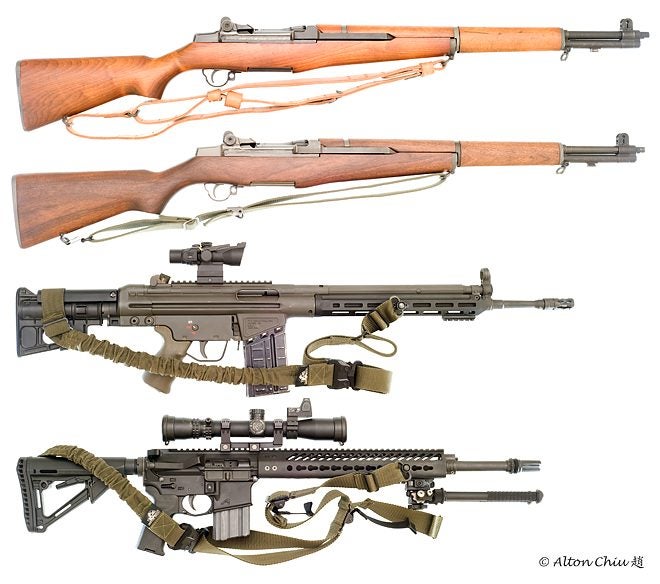A sling is not only a carrying strap, but also an ever-present shooting aid. It stabilizes the rifle when a bipod is not available or practical (e.g. sitting position in tall grass), or when braced against unstable supports. This article investigates four shooting slings ranging from hallowed antiquity to the modern age: 1907 leather sling, USGI web sling, Rifles Only carbine sling, and Rifles Only bungee sling.
1907 Sling
The 1907 sling, adopted by the US military in the year 1907, accompanied GIs through both World Wars. Although no longer issued, it is still commonly encountered in high power rifle matches as it offers unparalleled support and comfort. The sling is comprised of two leather sections measuring 1.25” wide. The front section adjusts loop sling tension, while the rear adjusts the length for carrying as well as the tension for hasty use. The leather construction offers ample comfort when carrying and when slung-up, but this comes at the cost of bulk. At approximately $70, it is also notably more expensive than the USGI web sling. In addition to leather, Turner Sling also offers the All Weather Sling in biothane construction to better withstand the elements and regular competition use. Different colours are available to better complement camouflaged and modern rifles.
The following paragraphs explore two different methods to rig the 1907 for loop use: the standard fashion with frogs (i.e., hooks) facing away from the stock, and the Jim Owens fashion with frogs facing in. The standard rigging faces the frogs out for easier adjustments, but is prone to position breakdowns due to slipping tension. To enter into a loop sling, the rifleman gives the arm loop a half-turn towards him. This ensures a smooth sling along the forearm. The arm loop is then moved above the biceps and the lower keeper moved tight against the arm. Lastly, the forearm wraps around the sling in the same manner as a hasty.
See Configuring 1907 sling in the standard fashion.
See Also Configuring 1907 sling in the Jim Owens fashion

1907 loop sling
In use, the author found the lower keeper to slip under a tight sling and thirty-calibre recoil. This allowed the loop to slide down the arm and eventually broke down the position. To prevent this, the author added a thick keeper that tightly gripped onto one ply to prevent slippage. The other ply still moved freely, to allow easy entrance and exit of the sling. Alternatively, Champion’s Choice offers a metal keeper (part# CCSK150) that serves the same purpose but with a thumbscrew for grip.
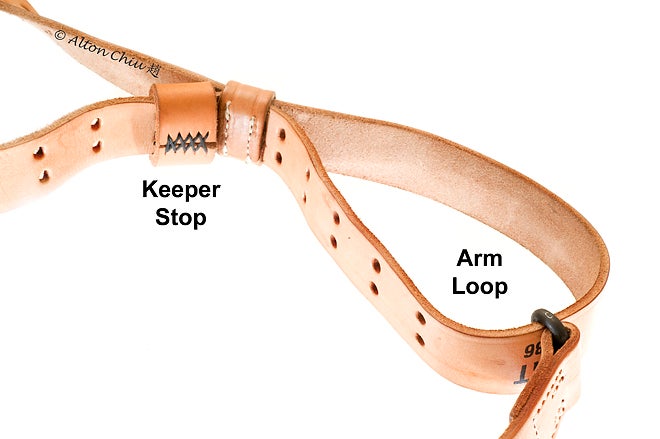
1907 arranged in standard “Army” fashion
The Jim Owens method solves the slippage by using the frog as a stop for the keepers. Instead of moving the keepers to tighten against the arm, the outer ply is moved towards the muzzle. This rotates the frog towards the keepers until it sandwiches them against the arm.
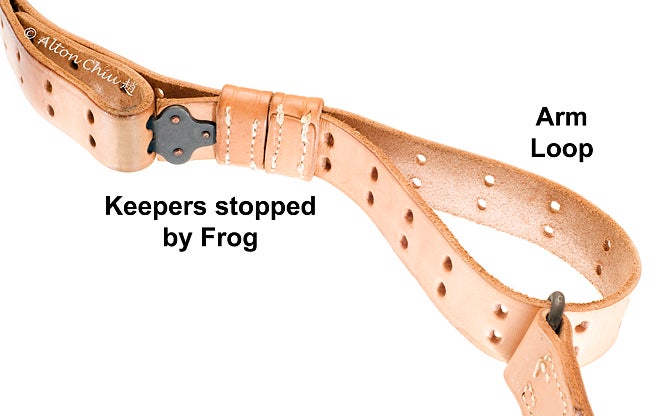
1907 arranged the Jim Owens “Marines” fashion
In practice, both methods offer the same comfort and stability. However, the author found it more complicated to enter and exit the loop with the Owens method. The inward facing fogs are also more likely to mar the stock. Regardless of the rigging method, the 1907 sling offers solid and comfortable shooting support if there is time to sling-up. It also aesthetically complements traditional rifles.
USGI Web
The USGI web sling was first used towards the end of WWII [erratum] circa the Korean War, and continued to serve till the present although it was recently supplanted by patrol type slings. It is a 1.25” wide length of cotton webbing equipped with a tri-glide, cam buckle, and C-clip that easily rattles. Later revisions changed the cotton webbing to nylon, deleted the C-clip, and changed the hardware from steel to nylon. This article focuses on the original version with the C-clip, available from the Civilian Marksmanship Program for a very reasonable $10, as it offers the most options for sling support.
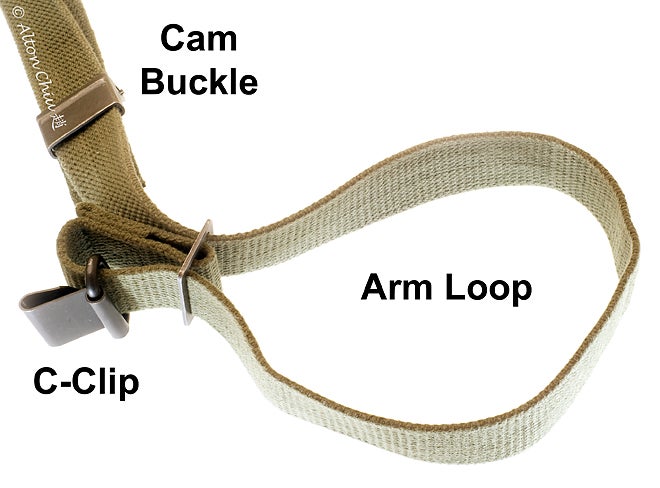
Web sling ready for loop use
The cam buckle adjusts the length for carry and for tension when slung-up. The primary function of the tri-glide is to form the arm loop, although it can also adjusts length. The web sling requires more time and effort to configure for loop use in comparison with the 1907 sling. The rifleman first detaches the rear sling swivel. He then feeds the extra webbing through into the middle of the tri-glide to form the arm loop. The arm loop is given a half turn, brought above the biceps, and tightened by pulling on the front portion of the sling. The sling stays taught and functions well throughout extended shooting sessions, but is not as comfortable as the leather 1907.

Web hasty sling
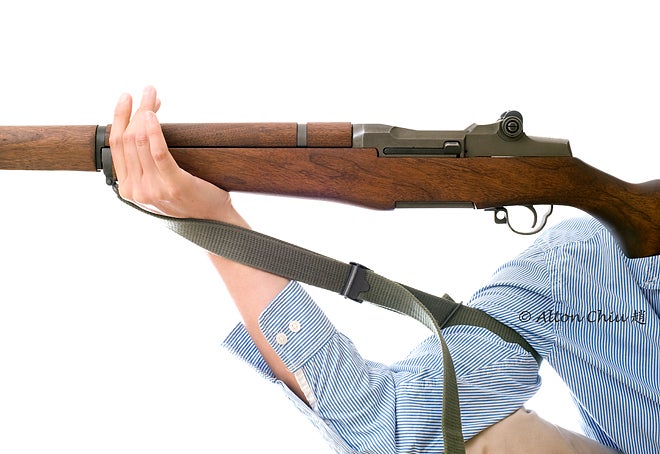
Web loop sling
The author prefers 1907 to the USGI web for aesthetics, comfort, and ease of use. The 1907 sling, configured on an AR-15 as a two-point, is long enough to allow rifle presentation while retained. Conversely, the web sling is too short to allow both simultaneously. For support (hasty or loop), both 1907 and USGI web require the user to dismount the rifle from body. However, the cost effective USGI web sling ensures every rifle has shooting support attached.
Summary
The 1907 and USGI web slings are both military issued slings that works well both as a carrying strap and as a shooting support. However, neither sling can provide support while retaining the rifle. Part II examines the modern Rifles Only carbine and bungee slings for their ability to retain and support with no configuration change necessary.
 Your Privacy Choices
Your Privacy Choices
